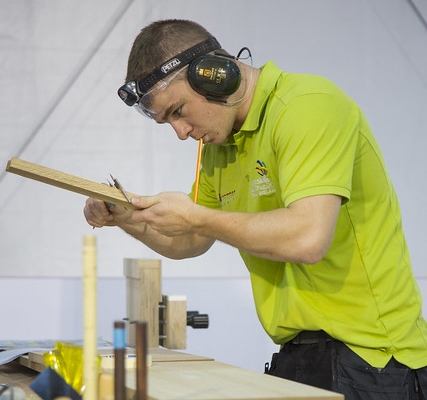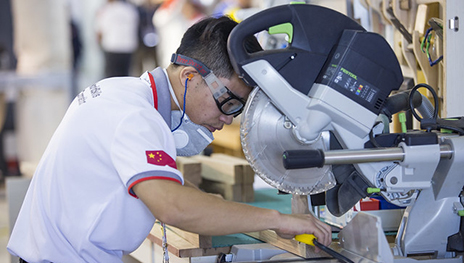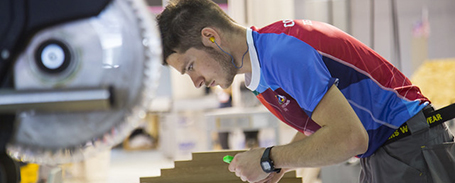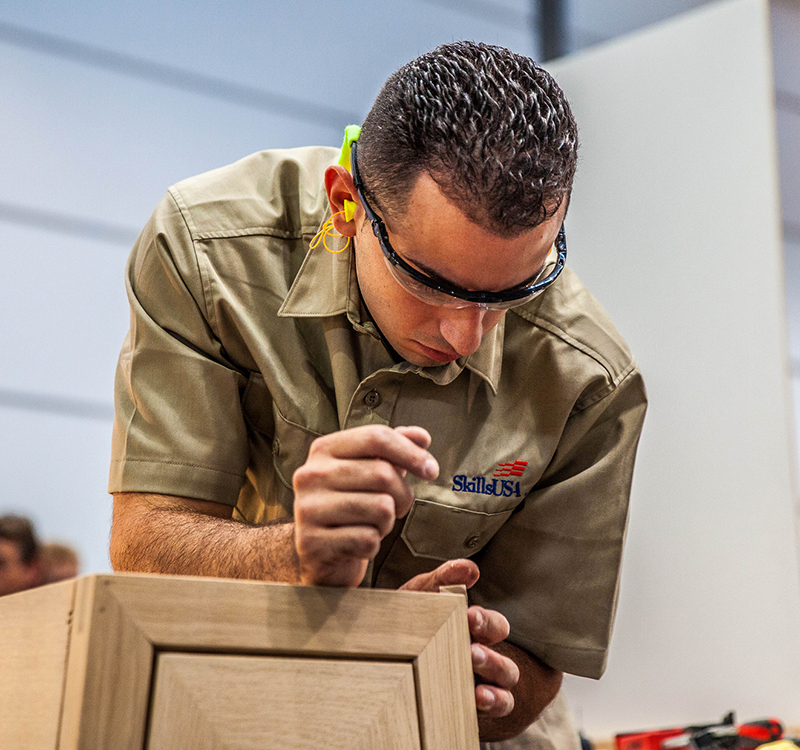Cabinetmaking
Cabinetmakers make and repair wooden fixtures and furniture. They work from designs and specifications to measure, cut, join, and carve wood and other timber materials with a wide variety of hand and power tools and equipment, including static machinery, to produce objects of both practical and aesthetic value.
The quality of the cabinetmakers’ work will show in the selection of wood and other materials to best demonstrate characteristics; near-perfect fit, cutting, and assembly of components; construction; and final appearance. Good cabinetmaking requires blueprint reading, hand-eye coordination, mathematical ability, and a steady hand. Cabinetmakers must combine creativity and innovation with precision and accuracy and demonstrate a high appreciation of how to use the beauty of wood to its best effect.
Cabinetmakers can find employment at furniture stores, furniture repair shops, and construction companies. Despite automation and production of prefabricated cabinets, in a modern world that highly values the eye and hand of the skilled craftsman, outstanding cabinetmakers will always be in demand.
Competitors and results

Krisztian Simon
737

Samanta Tatjana Kämpf
732

Jinqing Wu
732

















